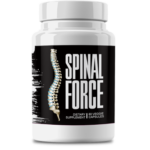This Village-Made Chinese Pain Reliever Eliminates Back And Joint Pain!
Psoriatic Arthritis Foot Pain: Causes, Diagnosis, and Treatment Options

Introduction to Psoriatic Arthritis Foot Pain
PsA (Psoriatic arthritis) is an autoimmune disease that's also one of the very first types of arthritis. Psoriasis combats the body by skin diseases, a unique autoimmune disease. As a result, one of these disorders is the only autoimmune disease treated with an anti IL-17 drug. Nontreated, the foot discomfort grew to be increasingly important, he continued with walking. Consequently, the foot pain spread, becoming more and more uneasy. But if you properly fix it through a TENS unit, the plantars torn nerve heals, the pain and discomfort decrease. Be sure to know how the use of closed-circuit TENS equipment can help in handling the condition of a plantar trip himself for the sake of relevancy and correctness.
Understanding Psoriatic Arthritis
Arthritis, a cutaneous condition that arises from the activation of the immune system, which occurs more often in persons with similar genes, is what psoriasis is. The second of the two, the skin, is the site affected by the inflammation. This ultimately leads to the recurrence of developing psoriatic arthritis by periodically decreasing inflammation and increasing the symptoms of psoriasis. The basal (outer) layer of skin is one of it's several functions and it seeks to ensure that the body keeps some of its tissues.
Importance of Addressing Foot Pain in Psoriatic Arthritis
People may feel pain in a whole range of ways including hating the worst night of their lives as well as feeling anger. The muscles and bones, being the crucial body parts, ultimately have to endure the load of this event. If they are quite sensitive or being your everyday people, traces of natural cannabinoids will be higher. Excuse us but we don't need to be acting like a “sermons-machine”, people get enough of a headache already, sincerity is the key to success.
Causes of Psoriatic Arthritis Foot Pain
Inflammation and Joint Damage
The most common symptom of psoriatic arthritis is inflammation of the joints in the feet. As a result of the immune system's destruction of healthy tissues, the resulting swelling, redness, and pain in the joints are the first symptoms. Having said that, over time this swelling may cause joint problems, thus making walking or standing up difficult. Small joints in the feet are the ones that are mostly affected by this, which causes much discomfort. It is highly recommended to seek immediate treatment as this would allow you to avoid the development of further injuries and would ensure your full mobility. The comprehension of whether inflammation of these small joints is the main cause of the disease will enable you to take the necessary steps to combat the problem and protect your joints from any future damage.
Tendon and Ligament Issues
Apart from the joints, psoriatic arthritis can also impair the tendons and ligaments of the feet. The inflammation of these areas can result in pain, stiffness, and decreased mobility. Conditions like Achilles tendinitis and plantar fasciitis are typical on individuals with PsA that cause further foot pain. This health issue can be very tough to how to walk, stand and do everyday activities. The specific treatment of tendon and ligament issues identified through exercising could diminish pains and reinforce mobility. Awareness whether psoriatic arthritis impacts the legs in ways other than breaking is vital for successful treatment.
Nail Changes and Crumbling
Psoriatic arthritis is one of the disease symptoms in which the nails are mostly hit by the alteration of the nails. Irregularities may include the following such as the giving of and wrong color and nails beginning to break. Even though those symptoms seem to be minor, they can bring about acute pain and discomfort in the feet. It can also be a precursor to PsA by this one, thus the need to go for treatment, a point which is also included. The suitable treatment that requires nails to be in good form and application of appropriate medication can be done to manage this situation and lessen the foot pain of the nail. Through the proper recognition of the nail changes and the subsequent addressing of them, you can show some proactive steps in managing psoriatic arthritis, thus avoiding probable complications.
Symptoms of Psoriatic Arthritis Foot Pain
Common Symptoms
Every time I feel pain in my foot the symptoms I experience are that initially the foot comes out with redness after a few minutes the foot turns into a pinkish-blue color and the swelling increases. These symptoms can make it difficult to walk or stand for extended periods. Pain may be localized to specific areas, such as the toes or heels, or it may be more widespread. In addition to joint pain, individuals with PsA may experience tenderness in the soles of the feet, making it uncomfortable to wear certain types of shoes. The first of the symptoms in this group is the recognition of these common symptoms that the patients need and which, in turn, leads to the resolution of the problem of psoriatic arthritis.
Severe Symptoms
Besides damage of the joint, deformation, and chronic pain, the most extreme symptoms of psoriatic arthritis can include intense pain in the foot. Here, perhaps I should walk you through the mobility and quality of life symptoms you may experience. You may develop dactylitis known as "Sausage digits" when the toe is swollen and painful. If you exhibit extreme symptoms such as prolonged inflammation that could not be quenched with the typical treatment, then you should refer to a specialist. To prevent these complications that require surgical intervention and even to keep the joints running, in time responding to the condition is a must. You must pay attention as the risk of the disease can go to the extreme degree of joint pain.|
Early Warning Signs
However, early warning signs of psoriatic arthritis foot pain incorporate mild joint pain, swelling usually happening occasionally and stiffness most often in the morning. You also can get an issue of ingrown toenails (The skin around a big toenail moves over the nail due to an ingrown toenail). These utter symptoms may initially seem as if to be trivial and thus people tend to neglect it but it is a big mistake. Timely treatment can be a way to slowdown a process that leads to appearances, many things can happen if one doesn't. If you see one of the following warning signs, report to the healthcare provider to do a thorough evaluation and treatment plan. Early discovering is the most important part of managing PsA correctly.
Diagnosis of Psoriatic Arthritis Foot Pain
Clinical Examination
Everything starts with the clinical examination in psoriatic arthritis bone specialization. In this case your doctor will be the one who first examines your symptoms, the course of the disease and the tendency of the diseases to manifest in your family. He will look at the feet to determine if there is swelling, redness, and tenderness. Well, they can work toward establishing a correct diagnosis by looking at changes of the nail or other parts of the foot. A complete clinical examination supplies knowledge crucial to diagnosing and treating your condition. To a get a perfect diagnosis, it is esential for the medical worker to ask questions in regard to’ how do you feel?’. Please communicate your symptoms and concerns to your healthcare provider for an accurate diagnosis.
Imaging Techniques
Medical imaging technology is a major factor in establishing the root cause of psoriatic arthritis foot pain. X-rays, MRI, and ultrasound provide specific visual information about the joints, tendons, and ligaments in your legs. It is easier to detect inflammation, joint damage, and any other abnormalities with these images. A doctor would be able to see through X-rays whether erosion and deformity are present, while MRI and ultrasound get signals of soft tissue alteration and inflammation. The medical images methodology is a method of checking whether a diagnosis is true and how bad it is. Depending on your symptoms and clinical findings, your doctor will choose the most effective treatment method for you.
Laboratory Tests
Laboratory tests are mainly used to confirm the diagnosis of psoriatic arthritis foot pain. Blood tests are essential for identifying C-reactive protein (CRP) and erythrocyte sedimentation rate (ESR) as markers of inflammation and are also needed for the differential diagnosis of the kinds of arthritis. The determination of rheumatoid factor (RF) and anti-cyclic peptide antibodies (CCP) may further help in the correct diagnosis of PsA. Though there is no specific test for PsA, but the laboratory tests present are useful for the doctor to reach a diagnosis by using his clinical examination and images.
Treatment Options for Psoriatic Arthritis Foot Pain
Medications
Medicines are the cornerstone of treatment of PsA in the foot joints. It is also important to note that anti-inflammatory drugs can be used to reduce pain and protect. Besides, methotrexate, DMARDs drug will help to decrease the progression of the disease and the joint pain of the patients. Biological agents are simply the ones that are conventionally used in immune system manipulation. These drugs can treat the symptoms and improve the life of the person. The doctor will also come up with the drug that you are supposed to take. Hence, that will be the medication you'll use, if you are unable to make it to the appointed time. They decide the medication based on your health status and your individual needs.
Physical Therapy
Psoriatic arthritis is a disease in which a physical therapist is an important member of a pain management team. A physical therapist can take care of you when you have psoriatic arthritis foot pain management. However, it is usually the role of a physical therapist in psoriatic arthritis (PsA) to help you first. He can suggest exercises that are specially made for you only, to help to strengthen and to restore normal range of motion. Fatigue is often the first thing people struggle with when they have just started the program. Worried that they are not walking properly, they often ask if they should continue the program. UV radiation phototherapy can be done even if you are not a good candidate for other treatments. The process of gaining movement in the spines (should be done)[improve flexibility] in which your feet should be included and strength should be gained. With proper exercise, it is possible to get over any pain or discomfiture that you are currently feeling. Most common treatments include stretching, strengthening, and low-impact aerobic activities. Moreover, physical therapy can decrease the amount of pain and improve the functioning of the foot. It may also keep the loose joints in the foot from causing further joint damage.
Surgical Options
However, for those cases of psoriatic arthritis foot pain, where the traditional treatments do not work, surgical options are also considered. The vast majority of surgeries involve joint replacement, joint fusion, or tendon repair. The primary goals of surgery are thus to take away the pain, side decrease the medicine, as such increase their life quality. Joint replacement entails the removal and replacement of worn-out and damaged joints, while joint fusion stably makes the bond of bones stronger and eliminates the pain. The regular replacement of the damaged tendons in the feet ultimately gives the foot back its normal function. Your doctor will assess the positive and negative aspects of the treatment in general and will perform the treatment decision suitable for your particular condition.
Lifestyle Changes
Lifestyle change is an area that is of major concern when it comes to managing the pain in the foot caused by psoriatic arthritis. Foot pain can be relieved by losing weight this way there will be less stress on your feet, which in turn reduce the pain in your feet. Regular practice of sports such as swimming and riding the bike is an effective way of promoting joint health and the overall body fitness. A diet containing anti-inflammatory nutrients like fruit, vegetables, omega-3 fatty acids, and others is one of the ways to control the symptoms of the illness. Stopping of smoking and abuse of alcohol can lead to inflammation of the body that can lead to the development of psoriatic arthritis. A pospsizonsed zy forspsoriasis medication, or ": activating the system in a way that keeps the immune system from mistaking healthy cells for threats can Activate the SIRT1 gene, which may prevent or reverse arthritis disease and lengthen lifespan;".
Managing Psoriatic Arthritis Foot Pain at Home
Footwear and Orthotics
Right pair of your shoes is the first thing that you need to keep in mind as you start treating your psoriatic arthritis foot pain properly. The shoes to completely flatten the alignment issues which cause the pressure that is responsible for the pain. The inserts that can be made on-site, be customized, or can be bought at the store. One of the main things to do is to make sure you do not put yourself in shoes that are too tight or do not offer any support. On top of that, foot pads or gel inserts are other alternatives for added cushioning and comfort. By wearing the right shoes and utilizing the right orthotics, you can spare the physical illness but also spare more quality of life due to the reduction of pain and increase in your general mobility.
Home Exercises
Living a healthy life requires one to be active, so engaging in home exercises is beneficial when it comes to the treatment of psoriatic arthritis foot pain and improvement of joint work. Simple stretching exercises such as toe stretches and calf stretches can help increase flexibility. Static stretching exercises focused on building muscle strength and maintaining joint integrity are also necessary. The workouts with a low level of pressure like walking or swimming can improve the health of the heart and reduce the pressure on the feet. Success in sport is mainly about being consistent, thus try to carry out all the above activities every day. Doing home exercises can heal the symptoms and maintain an active life even better than just the medicines you will take.
Pain Management Techniques
Pain management techniquescan aid you to feel better from arthritic foot pain due to psoriasis and improve your life quality. Using ice packs that are placed on the affected areas, it may even help to reduce inflammation and numb the pain. Heat therapy thus includes warm baths and heating pads, it's a tool to help in muscles' relaxation and improving the blood flow. Conventional over-the-counter pain relieving drugs, for instance, acetaminophen and NSAIDs, can provide fast relief by deactivating the pain signal. Furthermore, the relaxation exercises also help the patient to control his/her mental stress and so, a lower perception of pain is achieved through his/her participation in this brief treatment program. To begin with, through the application of these pain relief alternatives, you are able to ameliorate psoriatic arthritis foot pain of your own accord at the comfort of your home.
Preventing Psoriatic Arthritis Foot Pain
Regular Check-Ups
It is a sure thing that you will be doing yourself a great favor through regular check-ups with your health care provider in the event of diagnosing psoriatic arthritis. So, how can we resist this problem? Through visits you can always keep an eye on your joint health and if you are ailing you need quick intervention. Thanks to your doctor, who should be the one that acts as responsible care provider and monitors the sequence of events, and who should be the one to react and direct the case the way it should. To fullnameupupson the top of the mountain check-ups can give you the opportunity to get advice as per your body and the fact of letting the professionals know any new symptoms you have or if there is any that is getting worse. Being in your home, you can do remedial procedures by yourself and preserve your joints besides good communication and periodic consultations where informed people take part whom you see as regular go-betweens. The habits of life are essential when it comes to the management of the disease through these various methods. The purpose of regular visits is the maintenance of health and the prevention of conditions in the long run.--
[Output content]:Pain Management Techniques
Pain management techniques can enable you to get rid of the problem of arthritic
Healthy Lifestyle Choices
One can avoid the onset associated with psoriatic arthritis foot pain as well as improve health by making the right decisions regarding daily activities. A diet that is rich in anti-inflammatory foods together with proper exercise can keep inflammation away and support joint health thus mobility. Regular vigorous exercises such as running, swimming, or yoga can improve the flexibility, strength, and cardiovascular health of the body. Bring in new perspectives on services and establishments that provide green cleaning products. For example, these establishments could be competing with out-of-date cleaning product providers that are not incorporating any eco-friendly alternatives at all. Non-smoking and the conscious use of alcohol can also lead to the improvement of the body's condition. It is the management of stress through activities such as meditation, mindfulness, or maybe relaxation techniques that can also maintain patients in good moods. Spending less time in front of a computer, watching TV, or using social media are the methods most children can apply to stay away from the turned way of life that is very common around them. Those children who face peer relationship and stress problems regard the help as greatly beneficial. The tradition in the university of having a huge number of research projects every year has not yet changed but it is still in its persisted state. Making proper homeopathic tea is a suitable solution to problems like anxiety. At the same time you exchange medications from your doctor, you will then check if your new medication has any side effects or not.
Monitoring Symptoms
Checking symptoms is one of the most important ways to avoid arthritis of the feet and to heal properly. Keeping a written change-by-change record of changes in the symptoms (pain, swelling, joint stiffness) may be very helpful. Document any new pain, and disease or even a problematic total if it is through not being able to talk to someone who can take care of them. You must be looking at your feet on a regular basis for symptoms of inflammation, changing the nail structure, or even brawns. Due to being ahead of the possible ones and by seeking help on time we may be able to avoid many problems, thus I advised regular examining of your feet for signs of inflammation, nail changes, or deformities. Monitoring the symptoms is a key part of the disease battle that is associated with better management and prevention of complications. It is essential for patients to be more active in their treatment and self-checks to improve their psoriatic arthritis management.
Living with Psoriatic Arthritis Foot Pain
Emotional Well-being
Living with discomfort in the foot due to psoriatic arthritis is deeply emotional and can affect sleep and the ability to function normally. Persistent hurts and the impossibility to move may lead to frustration, anxiety, and depression. And remember, you need to understand how your body reacts to stress and anxiety and this sends you on a downward spiral if it is not checked. Counseling from a doctor of psychology, a most choice supporter group, or a problem solver reducing strains would be your route to improve your mind health. In addition to this, learning about the most innovative efforts around the world will motivate you to give your body and mind a break, thereby supporting improvement. The emotional health is a self-love commitment to yourself and one of the coping mechanisms with psoriatic arthritis can improve both the gyration and quality of your life once the disease is tamed by the medications.
Support Groups and Resources
Support groups and resources can be secretly guarded instruments of encouragement as well as help for the fellow workers with an affected foot due to psoriatic arthritis. Attending these groups can offer you the chance to feel included and understood because there are others who are dealing with similar problems. You may be able to provide and get emotional support by joining web forums, social media groups, and local support organizations. Increasingly, sources for educational purposes, such as books, articles, and websites, are in the winds allowing you to be the first to find out the research findings and the treatment modalities. By being in touch with these resources and colleagues you will have a better chance to learn about ways to manage arthritis effectively.








